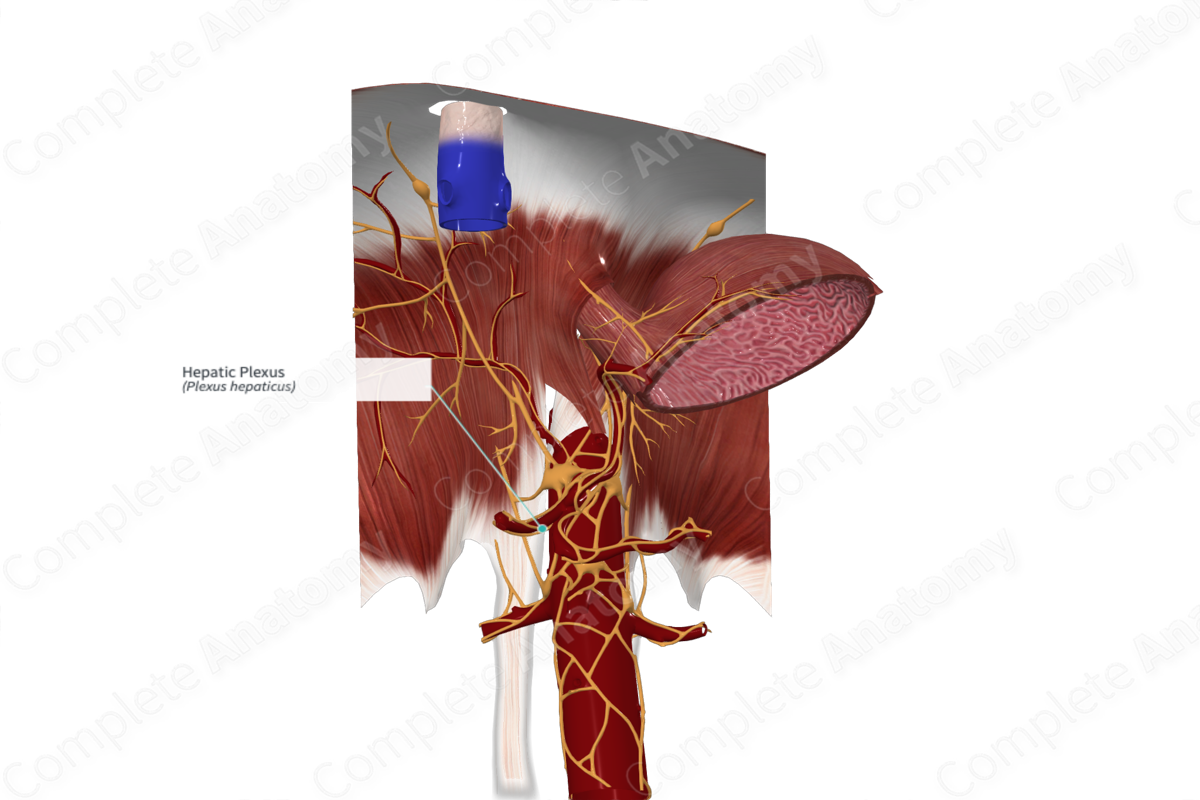
Quick Facts
Sympathetic Contribution: Preganglionic efferent fibers from T7-T12 spinal cord levels travel via the splanchnic nerve to the celiac ganglion or the superior mesenteric ganglion, then through the celiac plexus to the hepatic plexus.
Parasympathetic Contribution: Preganglionic efferent fibers from the vagus nerve travel via the anterior vagal trunk and hepatic branch, or the left vagal trunk and celiac plexus.
Course: The hepatic plexus is a secondary plexus of the celiac plexus. It is found on the common hepatic artery.
Sympathetic Supply: The sympathetic fibers of the hepatic plexus innervate the vascular smooth muscle and tissues supplied by the common hepatic artery: the liver, gallbladder, pylorus, duodenum, pancreas, and greater curvature of the stomach.
Parasympathetic Supply: The parasympathetic fibers of the hepatic plexus innervate glandular tissue and smooth muscle supplied by the common hepatic artery (mentioned above).
Contributing Nerves
The hepatic plexus is continuous with the celiac plexus via fibers running from the celiac trunk to the common hepatic artery. Sympathetic efferent fibers and visceral sensory afferent fibers travel from and to the celiac plexus, respectively.
Parasympathetic fibers from the posterior vagal trunk join the hepatic plexus by passing through the celiac plexus while anterior vagal trunk fibers reach the hepatic plexus via the hepatic branch of the anterior vagal trunk (Jensen, Alpini and Glaser, 2013).
Course
The hepatic plexus lies on the common hepatic artery. Its fibers travel along the branches of this artery to distribute to corresponding territories.
Branches
The hepatic plexus sends unnamed branches to the liver along both the hepatic artery and portal veins.
It gives rise to several named plexuses: the cystic plexus, a duodenal plexus, and the inferior gastric plexus. From the inferior gastric plexus, it can anastomose with fibers of the splenic plexus.
It is also connected to the celiac plexus and hepatic branch of the anterior vagal trunk.
Supplied Structures
The hepatic plexus is a mixed plexus conveying both sympathetic and parasympathetic nerves to the tissues supplied by the common hepatic artery. It also conveys visceral sensory nerves back to the CNS.
Sympathetic efferent fibers of the hepatic plexus innervate vascular smooth muscle and tissues of the liver, gallbladder, pylorus, duodenum, pancreas, and greater curvature of the stomach.
Parasympathetic efferent fibers of the hepatic plexus innervate glandular tissue and smooth muscle of the liver, gallbladder, pylorus, duodenum, pancreas, and greater curvature of the stomach.
Visceral sensory fibers carrying afferents from the liver, gallbladder, pylorus, duodenum, pancreas, and greater curvature of the stomach run back through the hepatic plexus.
References
Jensen, K. J., Alpini, G. and Glaser, S. (2013) 'Hepatic nervous system and neurobiology of the liver', Comprehensive Physiology, 3(2), pp. 655-665.
Learn more about this topic from other Elsevier products
Plexus

Visceral plexuses are a network of nerve fiber and ganglia surrounding organs of the abdomen and pelvis region that convey sympathetic, parasympathetic, and visceral afferent input.



